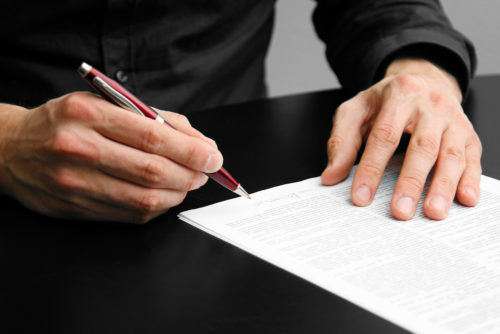Although the number of people switching banks is steadily declining, sometimes it’s still necessary to close a bank account. According to a J.D. Power survey, only 4% of Americans changed banks in 2018, down from 8% in 2016, with dissatisfaction concerning problem resolution being the number one reason that people change banks. Moving, excessive fees, inconvenient branch or ATM locations, and issues with fraud are also common reasons customers opt to close their accounts.
When closing a bank account, it’s likely that your bank will require a written request to do so. They may provide a specific form or template to use, but if they don’t, you must write a letter. You don’t need to explain your reasons for closing the account. A simple letter that lists the specific account numbers and instructions for the remaining funds will suffice. By sending a bank account closing letter, you won’t have to wait on hold or have an awkward conversation with a representative trying to convince you to keep your account, and you’ll have a written record of your request.
Sample Bank Account Closing Letter
The following is a bank sample letter for closing an account you can copy/download and personalize.
[Your Name]
[Your Address]
[Your City, State, ZIP Code][Bank Name]
[Bank Address]
[Bank City, State, ZIP Code][Date]
RE: Account Closure Request
To Whom It May Concern:
This is a formal request to close the following accounts (fill in account numbers as needed):
Checking [Account Number]
Savings [Account Number ]
Money Market Account [Account Number]
Other Account [Account Number]
All automatic recurring transactions for these accounts have been canceled. Please send confirmation of the account closure and a check payable to me for the remaining balance(s) to the following address:
[Address]
[City, State, ZIP]If you have questions regarding this request, I can be reached at [Your phone number].
Thank you for your prompt attention to this matter.
Sincerely,
[Your Name]
[Your Signature][Co-Account Holder’s Name] (if necessary)
[Co-Account Holder’s Signature]
Again, your letter should be simple and direct. You do not need to explain why you are closing the account, and if you have complaints, send a separate letter to customer service outlining the problems after the account is closed. Your letter should make it as easy as possible for the bank to close your account, and contain only the information necessary for that to happen.
Before mailing your letter, check with your bank to confirm the specific address where it needs to be sent. Some banks have dedicated addresses or P.O. Boxes for these requests. You may also be able to fax or mail the request to a local branch.
Other Ways to Close a Bank Account
A bank account closing letter isn’t the only way to close an account. Other options include:
Visiting the bank in person. Stop into a local branch and speak to a representative to close your account. You will likely be asked to sign an account closure document. This is a good time to withdraw the remaining balance from your account as well so you do not have to wait for the bank to mail you a check.
Online. Some banks will allow you to close your account online. Depending on the bank it might be as simple as clicking a few buttons, while others may require a written request via a secure message system. With the online option, you can also request a transfer of the remaining balance to a different account.
Via Phone. Generally speaking, banks require account closure requests in writing, but you may be able to initiate the process over the phone. Depending on your bank, they may be able to send you paperwork to sign to close the account, or you may be directed to an online account management system.
Before closing your bank account, cancel any automatic withdrawals, such as automatic payments or transfers to other accounts. Failing to do so could lead to fees or penalties when transactions are declined. Also, don’t withdraw all of your money until all pending transactions have cleared. If you have direct deposit, confirm that your deposits are being sent to your new account before closing your old one, to avoid losing access to your money or other problems.
Make Sure Your Account Is Closed
After closing your account by mail, wait a few days before confirming that it’s been done. Logging in to your account or calling the bank is the easiest way to do this.
Even if you send clear instructions, there could be delays, or the bank could require additional information or steps before the account is officially closed. If you withdraw all of your money, you could incur low balance, account inactivity, or account maintenance fees even if you have closed the account, so double-checking that the account is actually closed is important. The bank will most likely send you a letter confirming the request to close the account; keep that letter with a copy of the letter you sent on file in the event that there are any questions or problems.
Also, before closing your account, download all of your statements so you maintain a record of all of your transactions. Once your account is closed, you may lose access to the information, and you may need details about specific transactions in the future.
Image Source: https://depositphotos.com/





